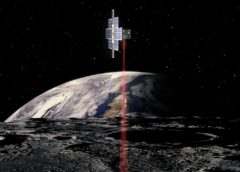NASA designed a new spacecraft called CubeSat, and also the Lunar Flashlight, with the mission of finding ice on the Moon’s south pole region with laser beams.
“As astronauts explore the Moon during the upcoming Artemis program, they may need to make use of the resources that already exist on the lunar surface. Take water, for instance: Because it’s a heavy and therefore expensive resource to launch from Earth, our future explorers might have to seek out ice to mine. Once excavated, it can be melted and purified for drinking and used for rocket fuel. But how much water is there on the Moon, and where might we find it?” JPL
According to NASA, this is why the Lunar Flashlight is needed. CubeSat is a small satellite, about the size of a briefcase, it’s goal will be to search for and detect naturally occurring surface ice believed to be at the bottom of the Moon’s coolest and darkest craters.
Managed by NASA’s Jet Propulsion Laboratory in Southern California, the spacecraft is a technology demonstration: It will seek to achieve several technological firsts, including being the first mission to look for water ice using lasers. It will also be the first planetary spacecraft to use a “green” propellant, a new kind of fuel that is safer to transport and store than the commonly used spacecraft propellant hydrazine.
“A technology demonstration mission like Lunar Flashlight, which is lower cost and fills a specific gap in our knowledge, can help us better prepare for an extended NASA presence on the Moon as well as test key technologies that may be used in future missions,” said John Baker, Lunar Flashlight project manager at JPL.
NASA Funds Artemis Student Challenges to Inspire Space Exploration

Rod is a blogger, writer, filmmaker, photographer, daydreamer who likes to cook. Rod produces and directs the web series, CUPIC: Diary of an Investigator. He is also the editor, producer and administrator of STM Daily News, a part of the TNC Network.


